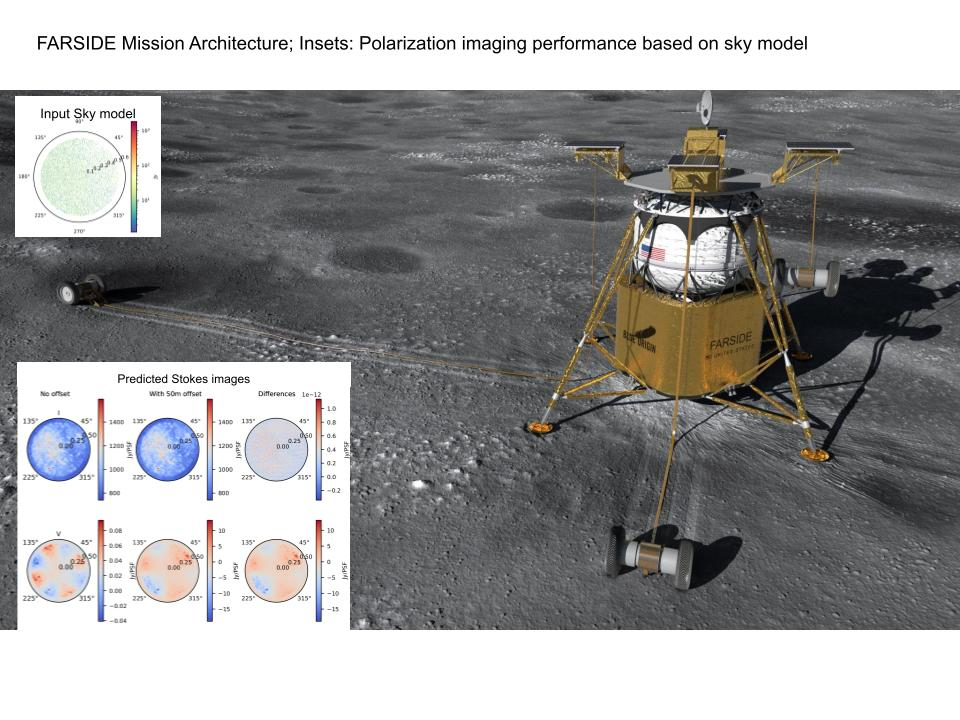Daily Image
09-06-2022Colloquium: Imaging with FARSIDE: A Radio Telescope on the Lunar Farside
| Submitter: | Nivedita Mahesh |
| Description: | The Farside Array for Radio Science Investigations of the Dark ages and Exoplanets (FARSIDE) is a NASA Probe-class concept to place a low-frequency radio interferometric array on the far side of the Moon. Lunar farside is the only location in the inner solar system where sky noise-limited observations are possible at extremely low radio frequencies. This will enable FARSIDE to look for radio emissions from magnetospheres of stars and exoplanets, which affect exoplanet habitability. It will also be a pathfinder for studying and understanding the transition from linear to non-linear physics in the early Universe. The current FARSIDE architecture employs a novel design consisting of 128 pairs of antennas and receiver nodes distributed over a 10 km × 10 km area in a four-arm spiral configuration that will operate from 200 kHz to 40 MHz. I will describe FARSIDE’s unique deployment strategy using rovers and report its impact on the imaging performance. Specifically, I will focus on the deployment constraints that will lead to a spatial offset between the orthogonal dipoles in each antenna and discuss its effects on the polarization performance of the array. I will also show simulated observations from FARSIDE. The image gives an overview of the proposed FARSIDE mission architecture. The central base station will be located in the lander and will provide the central processing, power, and communications. From the lander, there will be four two-wheeled axel rovers that will get deployed. The rovers in turn will have the tethers with antennas embedded in them. Inset images show the processing done to access the polarization performance of the planned array layout. A pure Stokes I input sky model is processed to the custom FARSIDE pipeline. The FARSIDE beam and array layout results in non-zero Stokes V images. There is considerable Stokes V leakage when there is a spatial offset. |
| Copyright: | CC-BY-SA-NC (credit: Blue Origin, Nivedita Mahesh) |
| Tweet |  |
